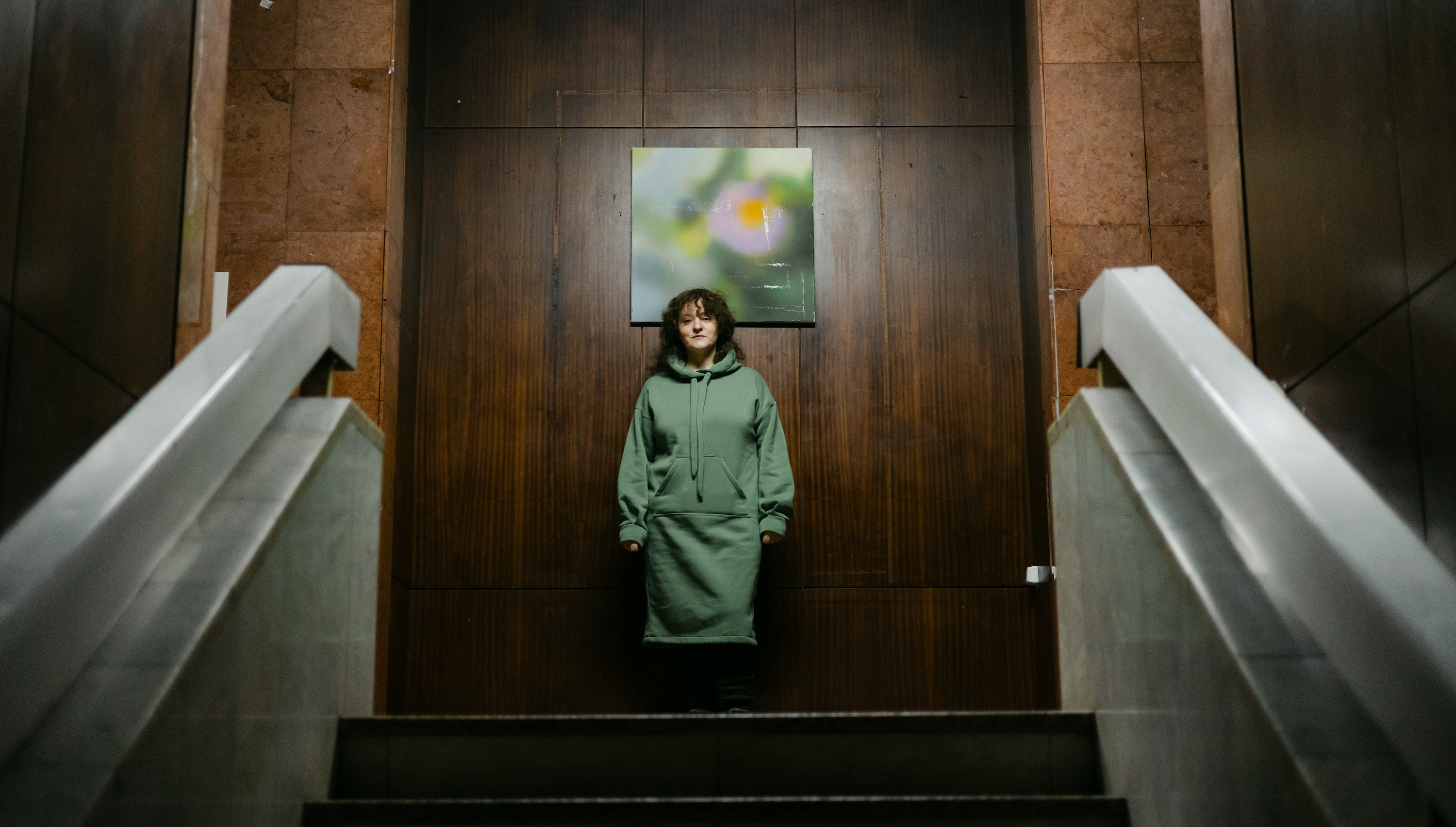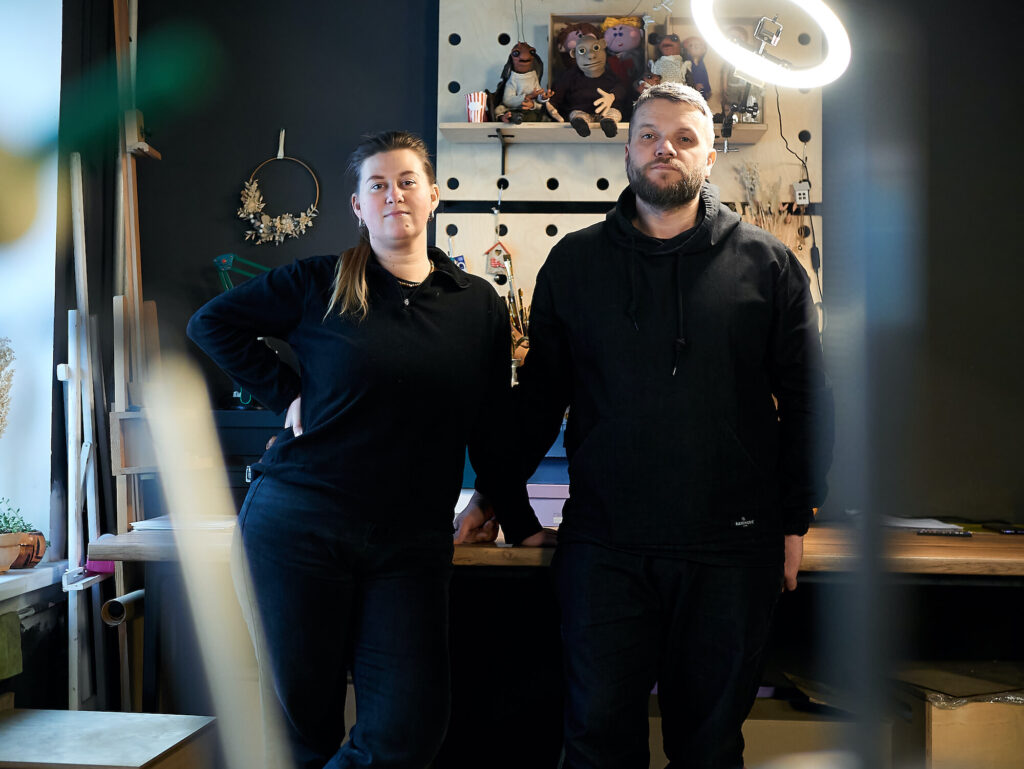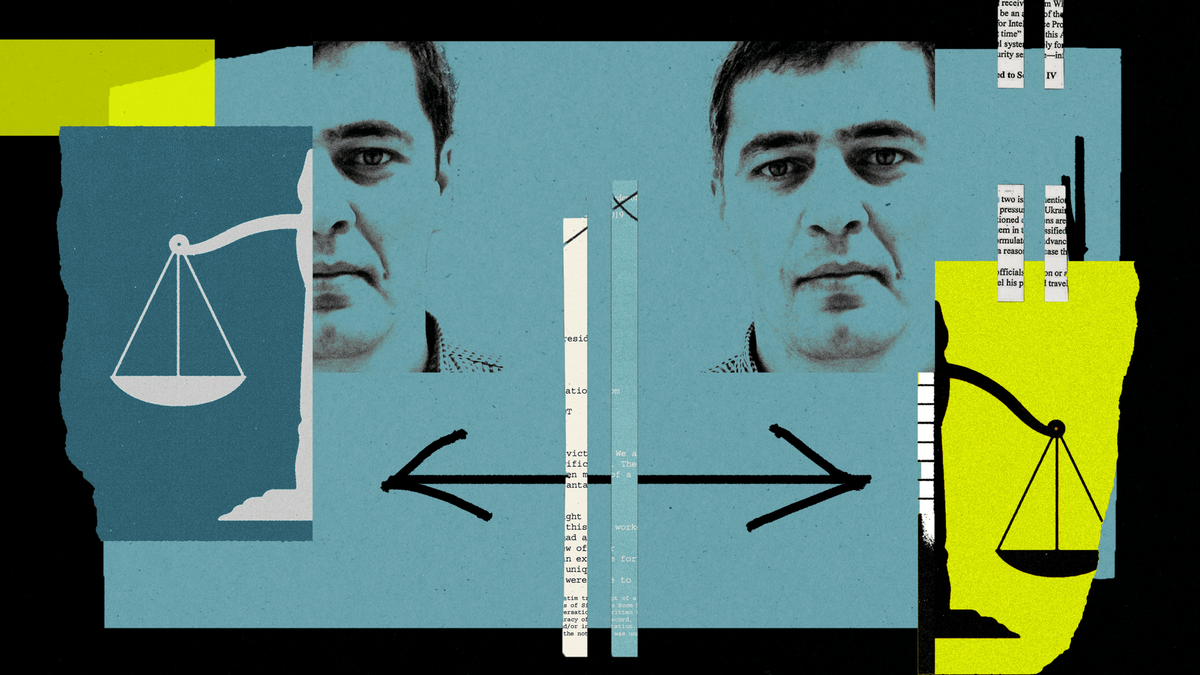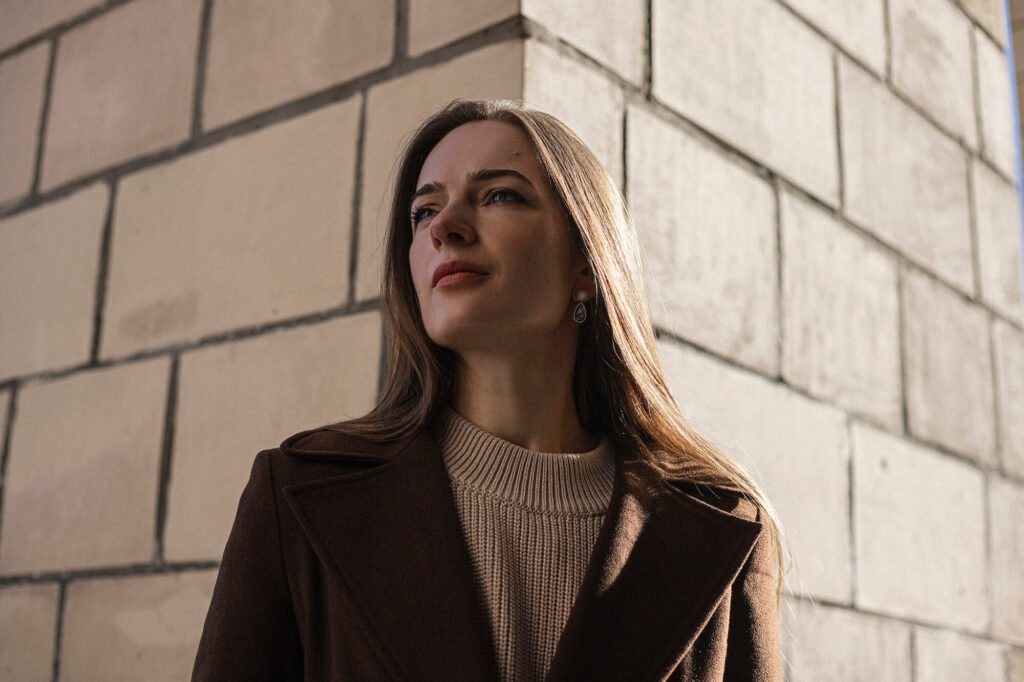It’s no wonder that the Ukrainian activist and volunteer movement arouses admiration and surprise in the West, leaving people wondering how Ukrainians manage to accomplish so much. The story of the Art Oborona NGO serves as yet another example. This organization, which now rescues architectural heritage from oblivion, used to be a branch of the Sister of Mercy Charity Foundation. Since 2014, this foundation has been taking care of wounded soldiers in the Kharkiv region, and after the beginning of Russia’s full-scale invasion of Ukraine—from other regions as well. In 2016, it branched off into cultural projects, which grew into a separate non-governmental organization, Art Oborona.
The organization brings together architects, historians, and monument researchers. People from the tech industry, museum employees, and others concerned about cultural heritage often get involved, too.
Now, the team is working to restore the building of the Kharkiv Art Museum as part of the Horizons of Culture project supported by the House of Europe and funded by the European Union. In particular, it’s in this museum that one of the two originals of “Reply of the Zaporozhian Cossacks” by Illia Ripyn is kept. The museum was shelled three times, and freshly boarded-up windows had to be fixed again and again. Although the most precious exhibits were rescued, the time has come to take care of the building itself, which celebrates its 110th anniversary this year.
Olesia Chagovets, the organization’s project manager, architect, and restorer, talks about how to take care of ‘inconvenient’ architectural heritage.
§§§
[Цей матеріал створений за підтримки Європейського Союзу]
§§§
You started out as a local NGO in Kharkiv. When did you expand to other cities and regions, and what motivated you to do this?
Our main focus is Kharkiv and its heritage. Our predecessors accomplished a lot here—and we’ve achieved a lot, too. We witnessed a turning point where the community largely embraced constructivism as a vital aspect of our city’s identity. Despite the ongoing destruction of many buildings and the distortion of the constructivist image, the community recognizes its significance.
Another big portion of our work revolves around post-constructivism, the ‘Stalinist Empire style.’ During Russia’s full-scale invasion, this escalated into a much bigger issue as some people argued, ‘This is Stalinist architecture, so it has to be demolished.’ This has sparked ongoing discussions. We strive to raise public awareness about the importance of preserving the cultural heritage of this period. While inconvenient heritage in European or English-speaking countries may primarily involve colonial or fascist architecture or perhaps sites like slaughterhouses, here, nearly all heritage is deemed inconvenient. And, I’m afraid, people are often hell-bent on just demolishing it all.
It so happened that initially, we focused on constructivism in Kharkiv and later expanded our scope to nationwide projects through collaboration with the Center for the Development of Museum Studies and Monument Research. Still, our favorite subject remains the inconvenient heritage of the Soviet period.
Currently, we’re engaged in the efforts to preserve the Kharkiv Art Museum. This is a new project funded by the European Union under the House of Europe program and by Goethe Institute. The museum building is a unique architectural monument designed by Oleksiy Beketov, a Kharkiv-based architect, in the early 20th century. Since 1944, it has housed an art museum. It’s impossible to imagine Kharkiv without this building.
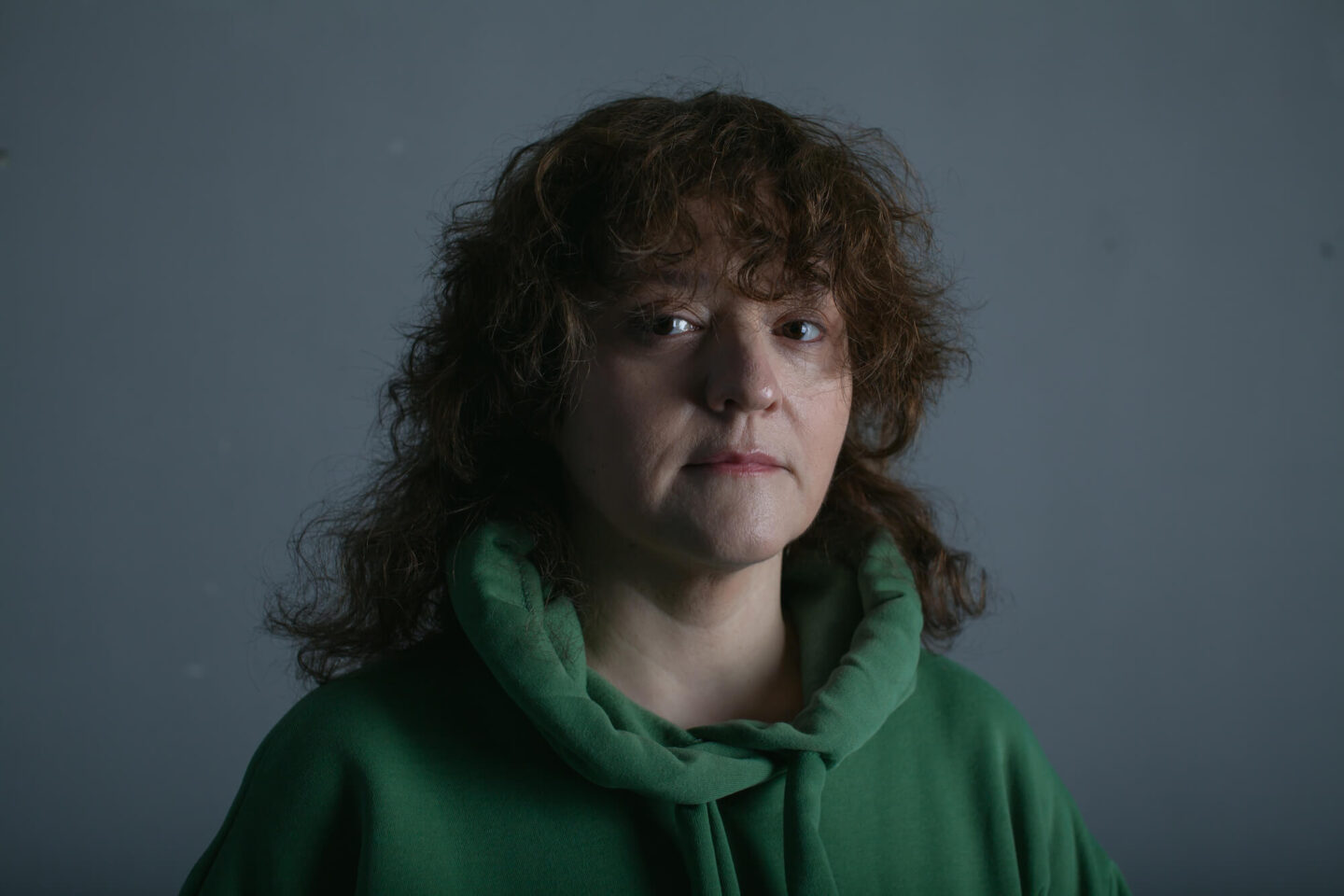
Decommunization has been underway for a few years now. But where’s the line between lamenting the loss of monuments to people like Shchors and truly preserving important cultural heritage? How do you work with local communities and raise awareness of the value of this inconvenient heritage?
Well, let’s talk about Soviet heritage first… If we take the building of the Kharkiv Regional State Administration—yes, it was built in the Soviet era in a ‘Soviet form,’ as some would say (it’s not true, but we don’t engage in controversy with them about it). The main question is this: who built it? Kharkiv architects did. They were someone’s parents. A woman messaged us saying her mother worked as a drywall finisher on that project. So, those buildings were created by us.
Yes, people struggled and barely made a living. But they also manifested their creativity, and architects did just that, too. We built it—so it’s our heritage.
In the present-day context, a problem arises with defining the concept and characteristics of the architectural style that existed from 1932 (when the Central Committee of the All-Union Communist Party of the Bolsheviks issued a decree ‘On restructuring literary and artistic organizations’) to 1955 (when they issued another decree, ‘On eliminating redundancies in design and construction’). People often use terms like ‘Stalinist architecture’ or ‘the Stalinist Empire style,’ but they don’t necessarily reflect the essence of this period’s architectural style in a precise and correct manner. Reducing the entire architectural heritage of that time to its definition solely through Stalin’s figure is inappropriate. Experts use terms like ‘the architecture of Soviet neoclassicism,’ ‘Soviet neohistoricism,’ and others for a more accurate definition of the architectural style of this epoch.
At one of the events, we heard people using the term ‘Soviet forms.’ Even though this formulation is not strictly correct, we sometimes use it too. Various architectural styles existed during Soviet times. Today, we see this trend when our audience can quite clearly differentiate between avant-garde, constructivism, functionalism, and modernism. But the period of Soviet neoclassicism is less understood. Sometimes, it’s with neoclassicism that this phrase—‘Soviet forms’—is associated. It can be more appropriate than ‘Stalinist Empire style’ when it comes to raising awareness, though, rather than academic research.
Our main task for now is to help ordinary people grasp the stylistic diversity of the architectural period of Soviet neoclassicism, considering the totalitarian context and the centralized government’s impact on creativity and self-expression in this domain.
There was this incident in the town of Kamianka in the Cherkasy region. We went there during a research expedition to the Kamianka State Historical and Cultural Reserve, organized by the Center for the Development of Museum Studies and Monument Research. They asked us what they should do with a monument sign honoring the Decembrists, which was allegedly subject to the law on decommunization / decolonization.
This wasn’t the issue we were supposed to handle during that expedition, but we did examine the monument sign only to confirm that this law had too many issues and gaps. First, this monument sign has significant artistic value, which needs to be documented. Second, it holds symbolic value, yet no one has ever studied it. It was only once we were on-site that we started to ascertain who its author was and what kind of significance was put behind this sign.
We remember the art of this period—the art of the Ukrainian Sixtiers—as a vivid expression of the pro-Ukrainian civic stand. We also see plenty of works with ‘encoded meaning,’ which was supposed to help them pass through countless Soviet inspections. Having seen that monument sign, we immediately wondered whether it might actually bear more significance than a mere ‘monument sign honoring the Decembrists.’ Our personal feelings have nothing to do with the scientific method, to be sure, so it was necessary to examine that sign before drawing any conclusions.
We conducted a brief survey among our audience, asking what people saw on that monument sign and what they thought it depicted. Since it wasn’t a well-known or well-documented object, people relied on their own knowledge and feelings. Even the date on the monument didn’t provide much context. The following symbols turned out to be the most recognizable: a sword; underneath it, an object resembling the Russian Empire’s coat-of-arms, which this sword was cutting (quite reasonable for a subject dealing with the Decembrists); and people depicted above the sword who probably owned it. The respondents said they could recognize among them the princes of Kyivan Rus, the hussars, and even poet Ivan Franko. The Decembrists didn’t occur to anyone. In a symbol featuring the date, someone saw the trident, while the red and black colors of the monument sign were associated with the flag of the Ukrainian Insurgent Army.
We can’t say for sure that this monument truly bears this kind of cultural code. And a survey like this can never be considered relevant for research purposes. But we do believe that it’s crucial to research works like this, their authors’ lives and civic stand, their perspectives on Ukraine, and so on. Whereas the present-day approach is simplified: anything created during Soviet times or honoring the Russian empire has to be dismantled or altogether destroyed.
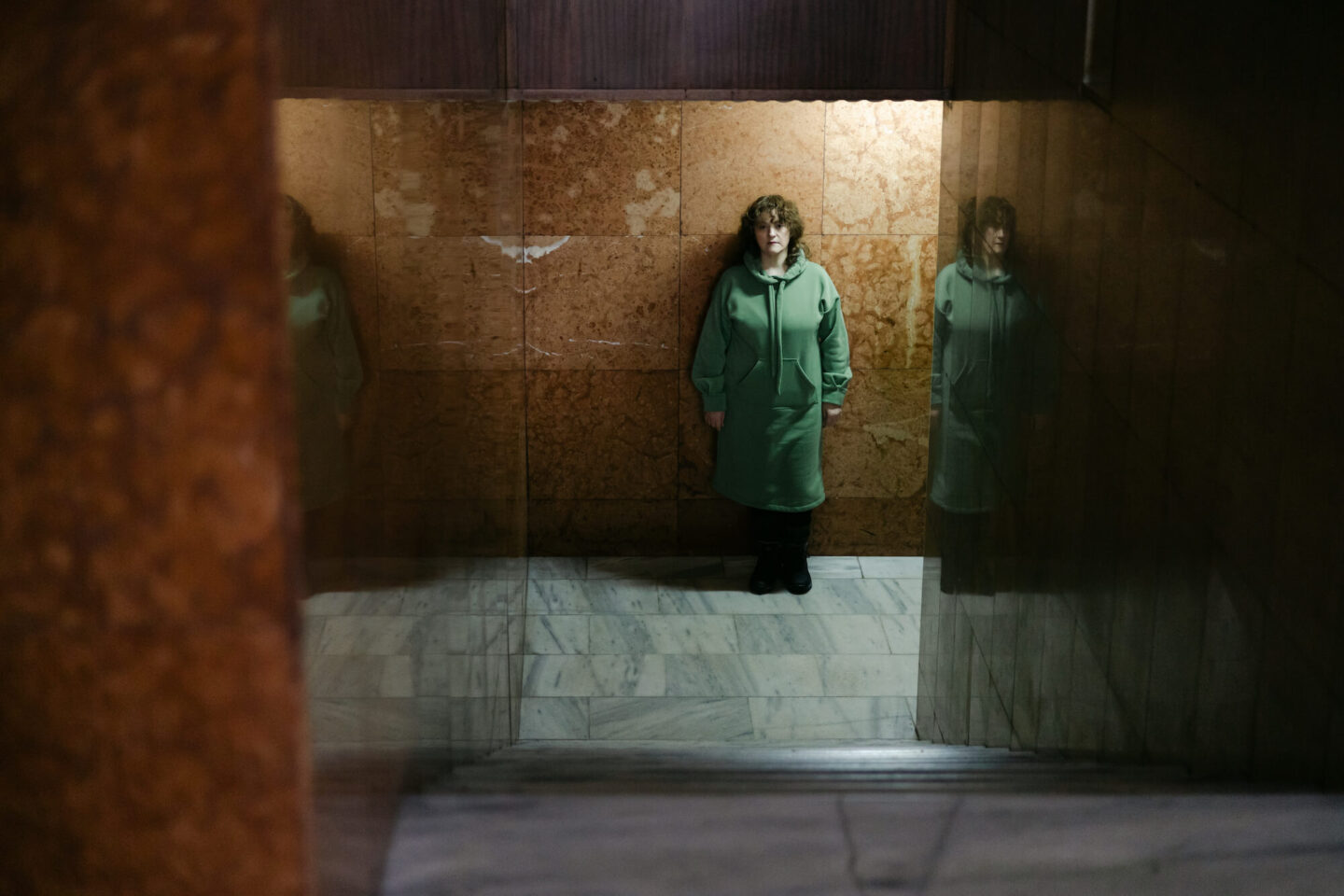
The employees of the Kamyanka Reserve recently emailed me, saying that they started to inquire about the authors of this monument sign, as they initially thought there was only one author. They found out that it was created by sculptor V. Selivestrov, artist O. Studeni, and architect S. Rets. At first, they confused Volodymyr Selivestrov with another Lviv sculptor but then realized it was a different person, a sculptor from Cherkasy. They also sent me Tetiana Sosulina’s memoirs about Oleksandr Studeni.
So, it’s not just a slab dating back to the Soviet era honoring an event in the empire’s history. This monument sign has seemingly come to life. It’s not a foreign element forced upon us, but our own cultural heritage created by Ukrainian artists and perhaps with our very own Ukrainian significance.
How do people determine value? If an object was built during Soviet times, it has to be decommunized. In contrast, we try to explain that it’s our heritage built by our parents. It’s easier for people to accept it when we make it personal.
How do very radical people think about it? They divide everyone into ‘saints’ who were persecuted and ‘executors’ who persecuted those ‘saints.’ But each of us can actually be a successor of either.
So, how should we then work with poor awareness and stereotypes around inconvenient heritage?
There are lots of fascinating mosaics in Kharkiv that can be considered from an artistic perspective. The same goes for other cities whose history is embedded in a similar context. These mosaics can be divided into two main categories: those where Soviet symbols are not defining, and those having plenty of them, for example, ‘Lenin on an armored car.’ It’s not only mosaics; many Soviet symbols were used as part of the décor on the facades of buildings designed in the style of Soviet neoclassicism.
A question arises: How should we treat all this? If there’s no symbol of Lenin or similar imagery, the mosaics or monumental artwork can be viewed in light of their artistic value. But ‘Lenin’ or ‘Komsomol members’ automatically make an object deemed worthless.
Today, many people are deeply traumatized. So, they sometimes can’t grasp the value and importance of this kind of heritage. They think it will become easier if we knock down this or that mosaics or demolish a particular monument. And then, monuments can at least be moved elsewhere, whereas mosaics, as artwork, are usually lost forever once they’re ruined. When it comes to elements of façade decoration, the situation becomes even more complicated, since these elements are an inseparable part of the exterior and can’t be simply removed.
My colleagues and I have long realized that this sort of heritage must be preserved, and it will be properly assessed by our successors, who will have overcome the trauma we all are experiencing now.
We can take a simple approach here by covering up these mosaics or décor elements with banners providing information about them..
To be sure, political manipulations and differences in opinion are always part of any social process. This problem gains special urgency in the case of decommunization and discussions about Soviet heritage. The incident with a missile strike on the building of the Kharkiv Regional State Administration shows how the government can impact public opinion. Immediately after the strike, the head of the military administration claimed that the building ‘is not subject to restoration.’ This quickly split people across the fault line of whether Soviet heritage needed to be rebuilt. But when someone says the same thing—‘this is not subject to restoration’—about an 18th-century building, people are more united in their opinion that this building actually has to be restored. In both cases—with the Soviet heritage and the heritage dating back to the 18th century—there’s an understanding that the war will end one day, and the land occupied by these buildings is precious, so people entertain any ways to dispose of the remnants of buildings on those land plots. That said, it’s easier to polarize society with regard to Soviet heritage, just as it’s easier to garner community support to demolish Soviet-era buildings.
Can potential beneficiaries of new constructions on the former cultural heritage sites take advantage of this radical stance?
There’s the law on decommunization. And there’s the situation when many buildings designated as cultural heritage are dedicated to, let’s say, a chapter of the communist party. It’s considered a good enough reason to strip these buildings of their cultural heritage status. And no one really cares that a Ukrainian composer or artist, or an important Ukrainian organization might have worked in that building back in the day. The building is simply stripped of its status, which means that it can now be demolished, and developers can build something else there. I’m talking about one specific case in Kharkiv: a building at 28 Sumska Street, which housed an underground safe house of Bolsheviks in 1905. According to the law on decommunization, this building is stripped of its conservation status—and everyone can do whatever they like with it now that it’s no longer heritage-listed. The need to reclaim its heritage status is no longer even considered.
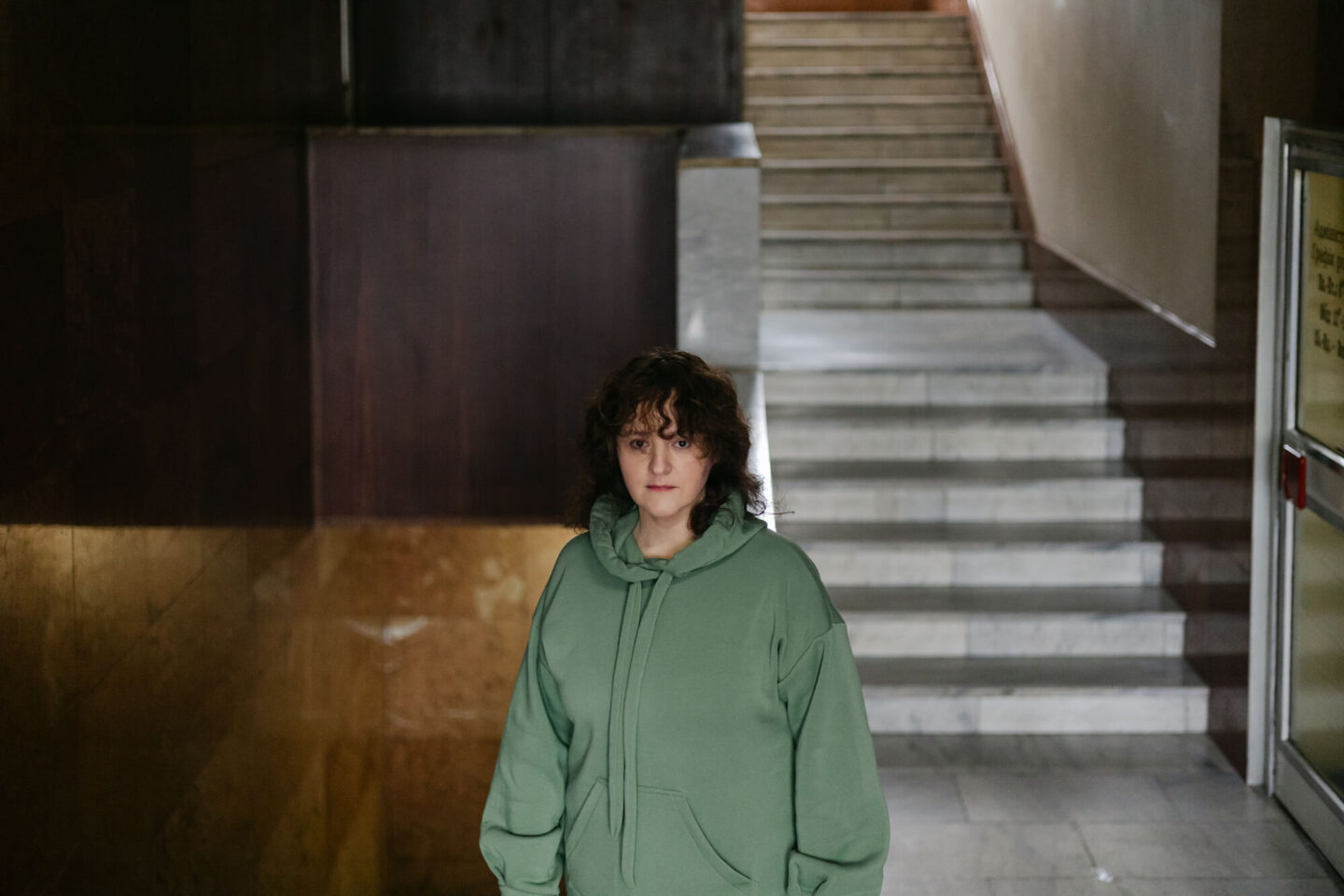
Does your organization cooperate with the government to protect the cultural heritage? Do you attempt to raise their awareness of what should not be dismantled or destroyed?
We don’t cooperate with the government directly. We assist those who know how to communicate with government officials. We can only try to raise public awareness of European values. European values are about giving time to any monument, be it mosaics or a building, to give it a chance to prove that it’s not communist or Soviet, to prove its value. This takes time.
As one of my colleagues says, we need continuity. If we destroy buildings from one period, we might just end up losing all of them since the whole city of Kharkiv is either imperial heritage or Soviet.
But then one could just say that Kharkiv has to be rebuilt from scratch if there’s so much inconvenient architecture there, couldn’t they?
Our team is now working on a project to visually identify heritage in urban spaces. We’ve already taken a trip through the western part of Ukraine. Don’t take me as a ‘Soviet junkie,’ but I do believe that Ukrainian cities and towns suffered the most after Ukraine became independent—due to terrible chaotic development.
What did the Soviet Union do? It arrived and left its mark everywhere. There are whole cities whose identity was erased. But it did provide a certain structure, certain planning. During the period of independence, Ukraine finalized this identity erasure and ruined the planning. So now we come to Ivano-Frankivsk or Ternopil and see this mish-mash of architectural styles.
Small towns often kept the partial Soviet identity in its worst interpretation: ‘the Soviet paradise’ was never created, while what we have now is Soviet clutter multiplied by Ukrainian clutter. All these towns look similar. They turned into a kind of ‘little Frankensteins’ stitched together from weird patches.
I’m afraid that as an architect and restorer, I can’t imagine how to deal with this. The government should develop a high-quality strategy and concept to preserve the cultural heritage. They haven’t done it yet. But I do hope that some people in government will design a strategy to handle it all.
What do you think might be a basic strategy to recover and preserve the cultural identity of our towns?
My understanding of a basic plan is not restoring but merely conserving. I have a feeling that with our present-day state—emotional, economic, physical—we are not able to do decent restorations. The sphere of restoration is at risk of disappearing altogether. So, I’d say that whatever we still have should just be conserved and preserved. And it’s only in the future, perhaps in a few generations, that we’ll have the capacity to research it properly—and only then recreate, renew, and restore it.
When it comes to tourist and cultural identity, I don’t think it’s our task to search for it. We won’t find it—we’ll just destroy it all. There’s a law in effect, but it’s so rigidly formalized that it stifles any sense of vitality.
Let’s say you have a castle or a palace that has been in decline for years. Why is it in decline? “We don’t have money for design and budget documentation, and for restoration either,” they claim. So, I ask what kind of design estimates do we need to just remove weeds from the facades before they ruin them?
And I get a response that, according to the law, they have no right to remove a single grass stalk. That’s why the building is deteriorating. There’s no will to preserve it. There is a will, though, to say it’s prohibited by law.
Every town wants to become a cultural and tourist center, but this is a task not for the locals but for professionals who could create a fascinating image of the town. Perhaps only one or two teams in Ukraine can do that—and there are so many towns and cities. That’s why I think that the right strategy for small towns would be not to set up all kinds of information stands every year but just conserve whatever they have and make efforts to preserve it.
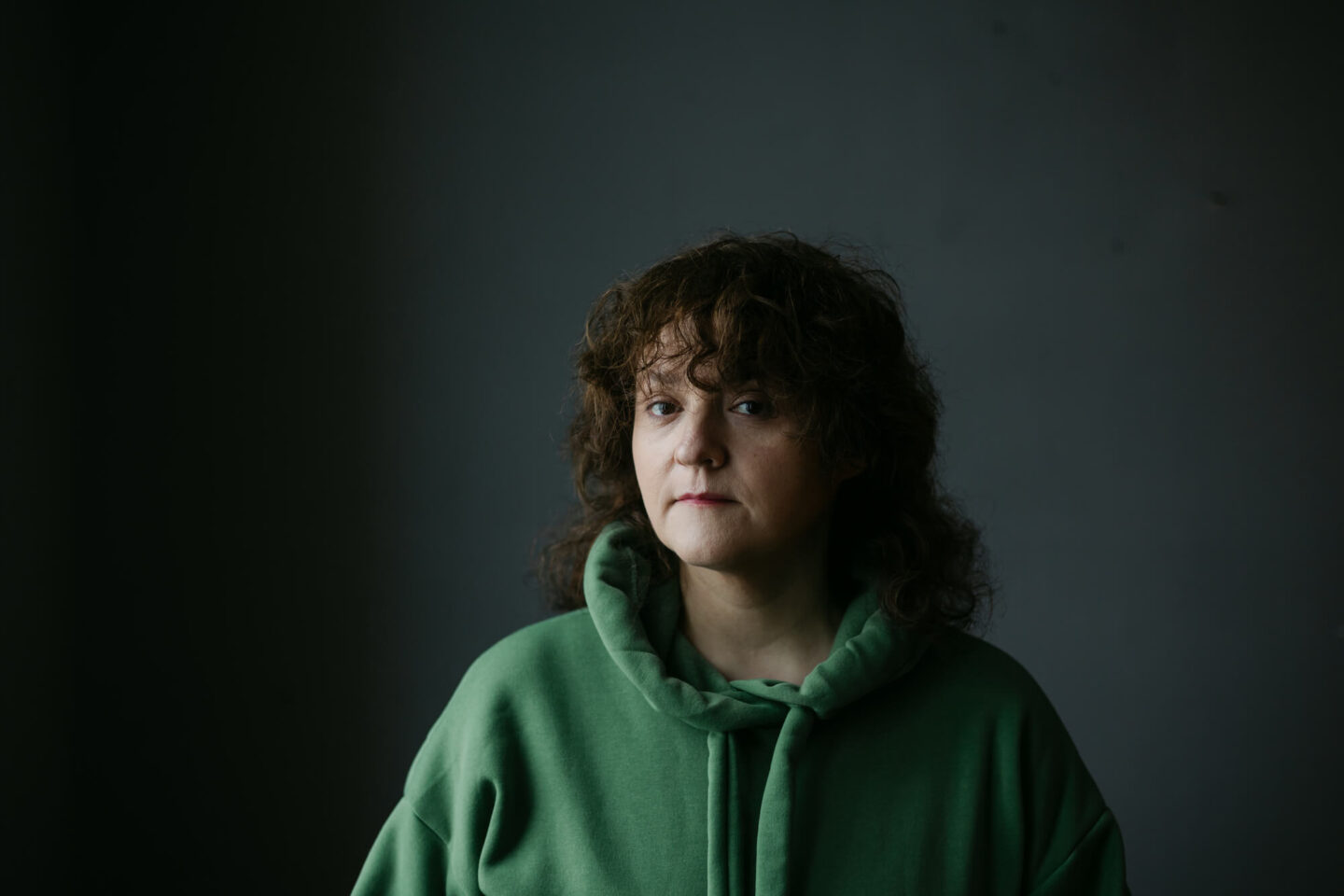
Your organization also works to present cultural heritage in the public space of historical towns in Ukraine. Out of 300 towns, you selected only four: Mykulyntsi, Olyky, Berdychiv, and Rzhyshchiv. Why these particular locations?
Before the full-scale invasion, we planned to cover different parts of Ukraine in this project, including the east, but eventually, we selected several distinct towns in different regions. When choosing the towns to work with, we considered how willing the local community was to implement changes. Ultimately, we selected four communities out of ten that were ready for change.
Each of these four towns is unique and has its own specific heritage, but three of them share one thing—they have castles. We chose these localities to show that a castle is not always a tourist magnet like the castle in Kamianets-Podilskyi. A town might be steeped in history, but you won’t really notice it apart from the castle. And then you go there and see that this town has a 1,000-year-long history. Our mission was to find five cultural and natural heritage sites in each of these towns, and research and improve them through modest, local resources. Once we launch a website dedicated to this project, this visual marking will become accessible to everyone.
Let’s say you’re driving through Olyky, and you see this Radziwill’s Route. And you wonder who these Radziwills were and what this route is. It turns out we have quite a few of these Radziwill’s Route; it’s just that no one knows about them. But it’s fascinating because the Convention concerning the protection of the world cultural and natural heritage designates heritage routes as part of cultural heritage.
Heritage routes could be royal, Roman, or sea routes. They serve not just as a means of getting from one historical object to another but as tourist attractions like, for example, the Royal Route in Finland, the Royal Inca Road in Chile, or the Royal Road in Kraków. These can also be Viking routes or other ancient roads. In Ukraine, there are also many historical routes and roads, such as Via Libera Regalis, part of the Izium Trail, or the Route from the Varangians to the Greeks, as well as various local routes connected, for instance, with prominent princes.
However, most of these trails remain barely visible in the actual physical space and are hardly ever marked. That said, they do have great potential for the development of tourism and the preservation of cultural heritage.
The Charter on Cultural Routes adopted in 2008 defines a cultural route as any route of communication, be it land, water, or some other type, which is physically delimited and is also characterized by having its own specific dynamic and historic functionality to serve a specific and well-determined purpose. The preamble to this charter highlights the intercultural links and the rich diversity of the contributions of different peoples to cultural heritage. It recognizes cultural routes as an essential element of cultural heritage that facilitates human progress. However, today most of these routes exist only on maps, in books, and virtual spaces, with limited visibility in the actual physical environment. While many countries have started marking these trails and making them visible in the real world, Ukraine has not even begun to mark them virtually, at least.
Berdychiv is just an incredible town, with a precious architectural code, but it’s so cluttered. Locals don’t even imagine how unique their old town is. You’ll see its beauty if you start working with it to show its originality—and start small, with decluttering and washing facades.
This is what our project is about. We’ll soon launch a website where people from other small towns could come and see: There’s this town, Berdychiv, and it has designated five sites of cultural and natural heritage. It will make them wonder—what locations could we designate as cultural heritage in our own town? So, the website will serve as a kind of a brief community guidebook.
Have you begun to observe any outcomes or progress resulting from this project?
It’s great that when people in neighboring communities learn about our upcoming visit, they also invite us to their towns because they recognize the need for change in their communities as well.
These people have come to realize that the tourism development strategies outlined by the government—strategies which often bear their names on them—just don’t work because there’s been little to no change. It’s unclear what steps to take, and they don’t have enough time to implement these strategies. So, they find themselves drafting yet another strategy only to discover that none of them have been put into action. This creates a frustrating cycle.
The vitality of heritage has become overshadowed by bureaucratic formalities and paperwork. This is particularly evident in urban studies and urban planning, as well as in the field of restoration.
It’s good, though, that many local community activists, who’ve been in a kind of Matrix, ‘take the pill’ and break free—just in time to connect with us and learn about our project. While a small-scale project like ours cannot bring about extensive change, of course, its objectives are clear and tangible. Even these few communities that have managed to ‘break free from the Maxtrix’ can already be considered a victory.
By the way, people in small towns recognize the importance of inconvenient heritage. Among those we communicate with I have yet to meet anyone who’d advocate changes along the lines of ‘here’s a 16th-century building, let’s preserve it, and here’s one from the 20th century, let’s demolish it.’
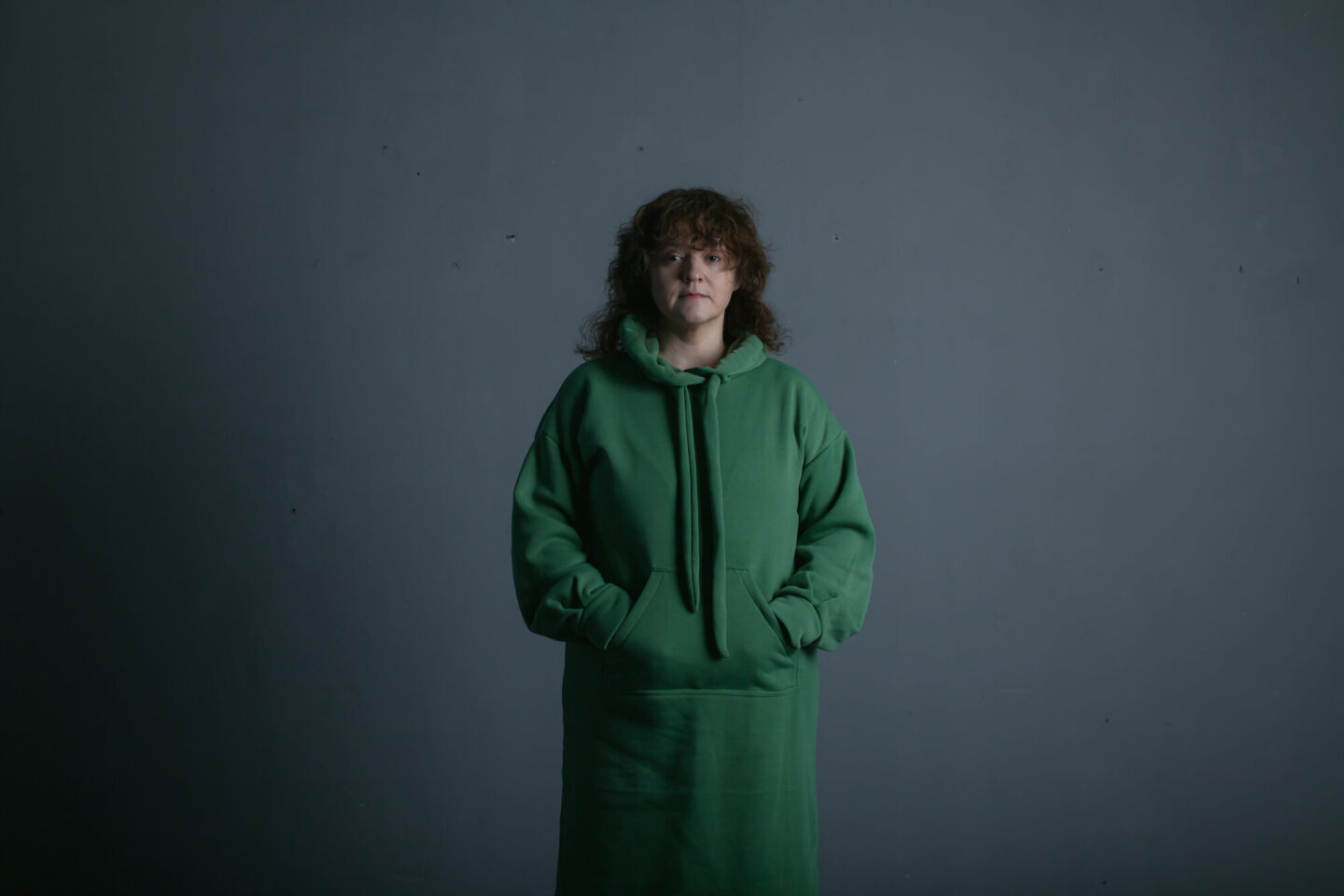
What are your thoughts on working with difficult heritage? This certainly presents its own set of challenges.
My closest colleague and I are avant-gardists at heart. Personally, I don’t have a fondness for baroque; I view it as the epitome of societal decay. While I do acknowledge its significance, I find the architecture of the late 1920s, the avant-garde, much more captivating. The architecture from the late 1930s to the early 1950s holds importance for me, although it doesn’t resonate with me on a personal level. We initially focused on Kharkiv, where the architecture from that period played a significant role in shaping the city’s layout. It forms the foundation of urban planning, so it’s unavoidable. The Kharkiv Regional State Administration building, which suffered from the missile strike, stands as the centerpiece in the city’s main square. So, our work with ‘Stalinist heritage’ comes from the place of pain.
Sometimes, we get comments from haters. ‘Soviet junkies’ accuse us of destroying ‘all things Soviet,’ while others call us ‘Soviet junkies’ and say we can’t live without it. In fact, we don’t belong to either camp. I’m glad, though, that lots of people are willing to listen to us and support our efforts in heritage preservation.
What personally drives you to engage in the preservation of cultural heritage?
I contemplated it for a while since working in this field isn’t solely driven by personal motivation. I once came across an intriguing article about human genetics, which said that all that humans really need is entertainment, food, and safety. These are three basic needs. And most people do live like this. However, it also mentioned a fourth need—the need to seek out the new and unknown. I feel that we just have this need number four. A society cannot progress without people who constantly search for something beyond the ordinary. Historically, these people may have been ostracized, yet they often made groundbreaking discoveries. So, even if I hadn’t pursued a career in architecture and restoration, I’m certain I would’ve found another avenue to satisfy this need for exploration.
This publication was produced with the financial support of the European Union. Its contents are the sole responsibility of the Art Oborona NGO and do not necessarily reflect the views of the European Union.

